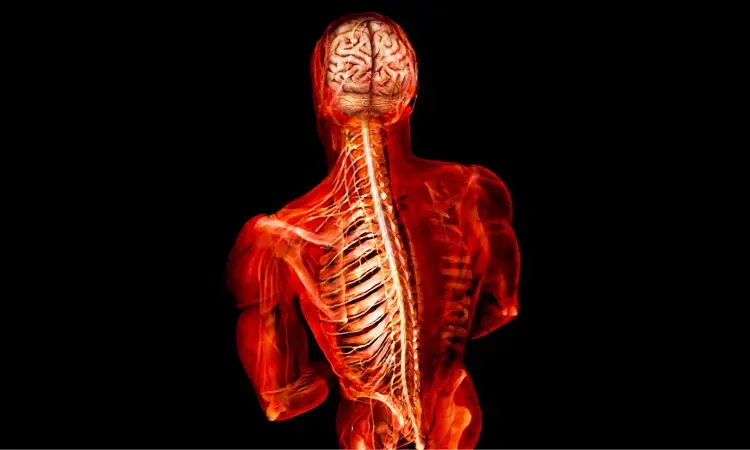- Home
- Medical news & Guidelines
- Anesthesiology
- Cardiology and CTVS
- Critical Care
- Dentistry
- Dermatology
- Diabetes and Endocrinology
- ENT
- Gastroenterology
- Medicine
- Nephrology
- Neurology
- Obstretics-Gynaecology
- Oncology
- Ophthalmology
- Orthopaedics
- Pediatrics-Neonatology
- Psychiatry
- Pulmonology
- Radiology
- Surgery
- Urology
- Laboratory Medicine
- Diet
- Nursing
- Paramedical
- Physiotherapy
- Health news
- Fact Check
- Bone Health Fact Check
- Brain Health Fact Check
- Cancer Related Fact Check
- Child Care Fact Check
- Dental and oral health fact check
- Diabetes and metabolic health fact check
- Diet and Nutrition Fact Check
- Eye and ENT Care Fact Check
- Fitness fact check
- Gut health fact check
- Heart health fact check
- Kidney health fact check
- Medical education fact check
- Men's health fact check
- Respiratory fact check
- Skin and hair care fact check
- Vaccine and Immunization fact check
- Women's health fact check
- AYUSH
- State News
- Andaman and Nicobar Islands
- Andhra Pradesh
- Arunachal Pradesh
- Assam
- Bihar
- Chandigarh
- Chattisgarh
- Dadra and Nagar Haveli
- Daman and Diu
- Delhi
- Goa
- Gujarat
- Haryana
- Himachal Pradesh
- Jammu & Kashmir
- Jharkhand
- Karnataka
- Kerala
- Ladakh
- Lakshadweep
- Madhya Pradesh
- Maharashtra
- Manipur
- Meghalaya
- Mizoram
- Nagaland
- Odisha
- Puducherry
- Punjab
- Rajasthan
- Sikkim
- Tamil Nadu
- Telangana
- Tripura
- Uttar Pradesh
- Uttrakhand
- West Bengal
- Medical Education
- Industry
Electrophysiological Study Superior to ECG for Prophylactic Pacing Selection in Myotonic Dystrophy Type 1: JAMA

France: The findings of a new study published in JAMA Cardiology suggest that an electrophysiological study (EPS) provides greater accuracy than an electrocardiogram (ECG) in identifying patients with myotonic dystrophy type 1 (DM1) who may benefit from prophylactic permanent pacing.
- Participants had a median follow-up of nearly six years.
- At baseline, 38% of patients had a His-ventricular (HV) interval ≥70 milliseconds.
- At baseline, 32% of patients met ECG-based criteria (PR interval ≥240 milliseconds or QRS duration ≥120 milliseconds).
- During follow-up, 14% of patients experienced a major bradyarrhythmic event (MBAE).
- Multivariable analysis showed that the HV interval was the only variable significantly associated with MBAE incidence.
- An HV interval ≥70 milliseconds was a stronger predictor of MBAEs than ECG criteria, with hazard ratios of 2.89 versus 1.95.
- EPS correctly identified 68.35% of patients at risk, compared with 34.76% for ECG-based assessment.
- Lowering the HV threshold to 65 milliseconds increased sensitivity to over 90% and improved net patient reclassification by 33.7%.
Dr Kamal Kant Kohli-MBBS, DTCD- a chest specialist with more than 30 years of practice and a flair for writing clinical articles, Dr Kamal Kant Kohli joined Medical Dialogues as a Chief Editor of Medical News. Besides writing articles, as an editor, he proofreads and verifies all the medical content published on Medical Dialogues including those coming from journals, studies,medical conferences,guidelines etc. Email: drkohli@medicaldialogues.in. Contact no. 011-43720751


